Amplitude Account-Based Marketing (ABM) Integration
Learn how to see in Amplitude which companies are viewing your digital properties
In the world of B2B, one of my favorite prospecting techniques is account-based marketing (ABM). If you are unfamiliar with ABM, it is a method of leveraging technology to identify the companies that might be interested in your products or services. Identifying potential prospects is essential because most B2B buyers do much of their research before calling or completing a website lead form.
While there are many forms of ABM, in this post, I will focus on technologies that use IP address lookups to identify which companies are viewing your website. Several vendors exist in this space, including 6sense, Demandbase, KickFire, etc. At Amplitude, we use 6sense, which provides us with company name, employee count, industry, revenue, and many other data points. This company data is collected by ABM vendors in their massive database and shared with their clients real-time via JavaScript tags for a fee. ABM companies typically can only identify users when they are on a corporate VPN or network, so there will be many cases where the ABM data won’t exist.
I will demonstrate how you can integrate these ABM data points into Amplitude and learn more about your prospects. While the examples below will use 6sense, remember that the same principles apply to any ABM vendor.
How Does it Work?
At a high level, the integration works by sending Amplitude a new event on each page load that contains the 6sense data as user and event properties. Once the information is in Amplitude properties, you can use it like any other user property – in segmentation reports, cohorts, and all other Amplitude reports.
Note: You would likely want to mark this new ABM event as a “non-active user” event in Amplitude so you don’t inflate your active user % in reporting. For a more detailed implementation setup, see the last section of this post.
Let’s see what types of questions can be answered using this Amplitude – ABM integration.
Which Organizations Are Viewing My Website?
We’ll start by viewing which companies are visiting the website. To do this, you can create a data table that shows the new 6sense view event broken down by the 6sense company name. In this case, I am filtering out our own company (Amplitude) and cases where no company name exists in the ABM tool:

This information can be helpful for your sales and marketing teams to identify companies that may be interested in their products and services but whose interest is currently unknown. Once this data is in Amplitude, it can be sent to a CRM product like Salesforce or routed to Slack for additional visibility.
What Content Is Each Organization Viewing?
Next, you might be curious to see what each company views on your website. To view this, you can add another breakdown:
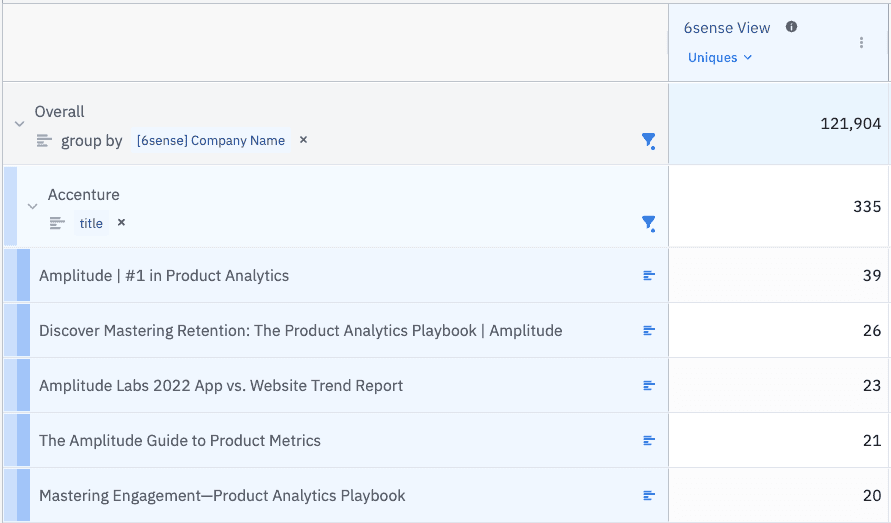
Here we can see the top pages viewed by Accenture. For a sales rep at a B2B company, filtering a report like this for each target account is a great way to see how interested they might be in your products and services and which topics might interest them. This information can help guide conversations with prospects. While we don’t know the exact person who viewed these pages (unless your website has a login), it is still helpful for prospect research.
If you want to do more sleuthing, you can break down the data by 6sense City and then view content by title. Here I am breaking down people from Accenture who live in Sydney to see what content they have read:
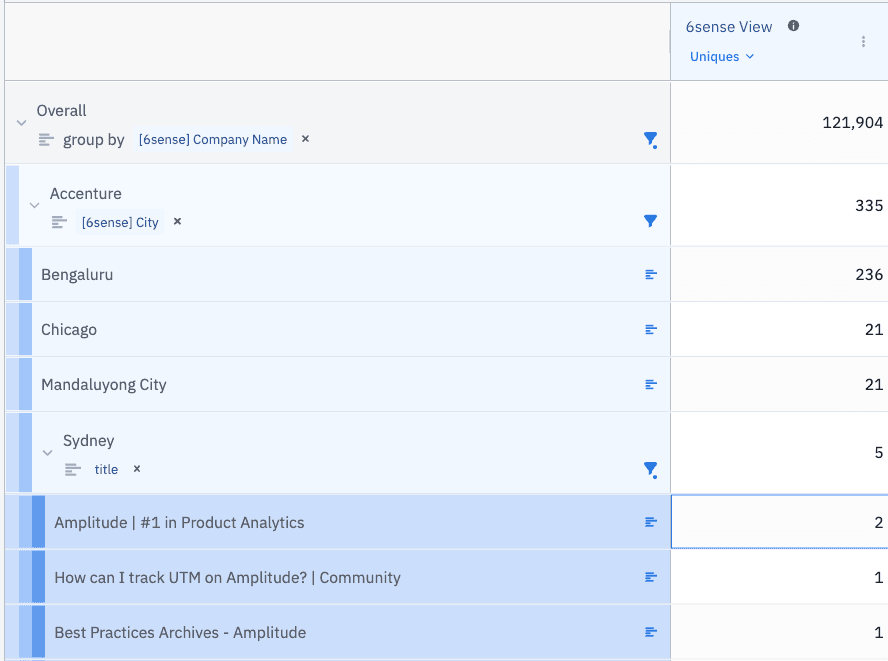
Which Companies Are Looking to Buy?
In the B2B world, the pricing page is crucial. When prospects view your pricing, it may indicate that they are deeper in the research funnel. The Amplitude ABM integration allows you to easily view which companies are viewing the pricing page on your website:
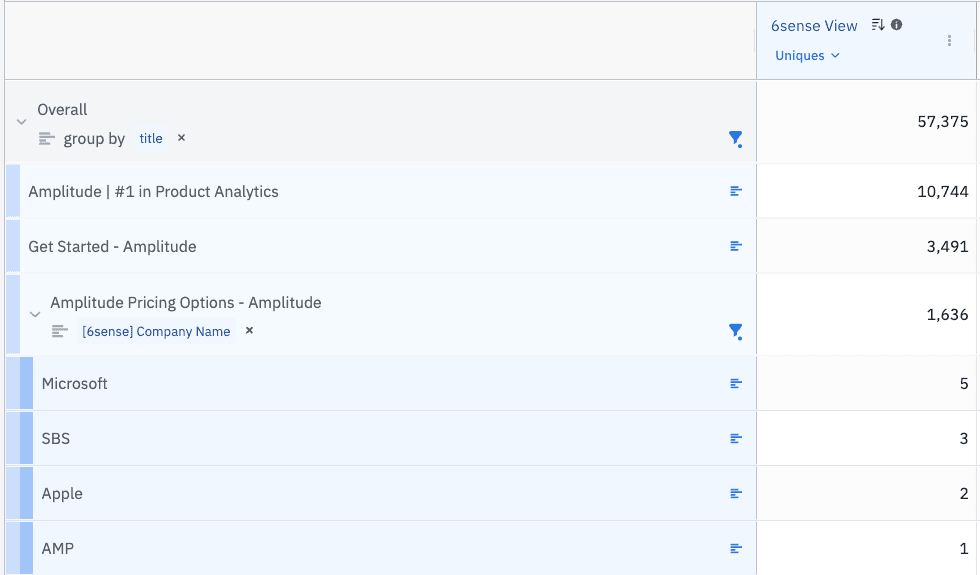
Which Companies Might Be Interested in a Topic?
Suppose your marketing team wants to send an email to a bunch of companies it has in its CRM system. Email conversion rates are best when the content is relevant to the recipient. Using this Amplitude ABM integration, you can pick a topic from a web page or a blog post and see what companies viewed that content. These companies might be interested in learning more about that topic.
To do this, you can create a report that looks at a specific topic and then break it down by the 6sense company. This list of companies can then be hand-picked from your CRM system to receive a targeted email on the topic. Here is the type of Amplitude report you can create for this:
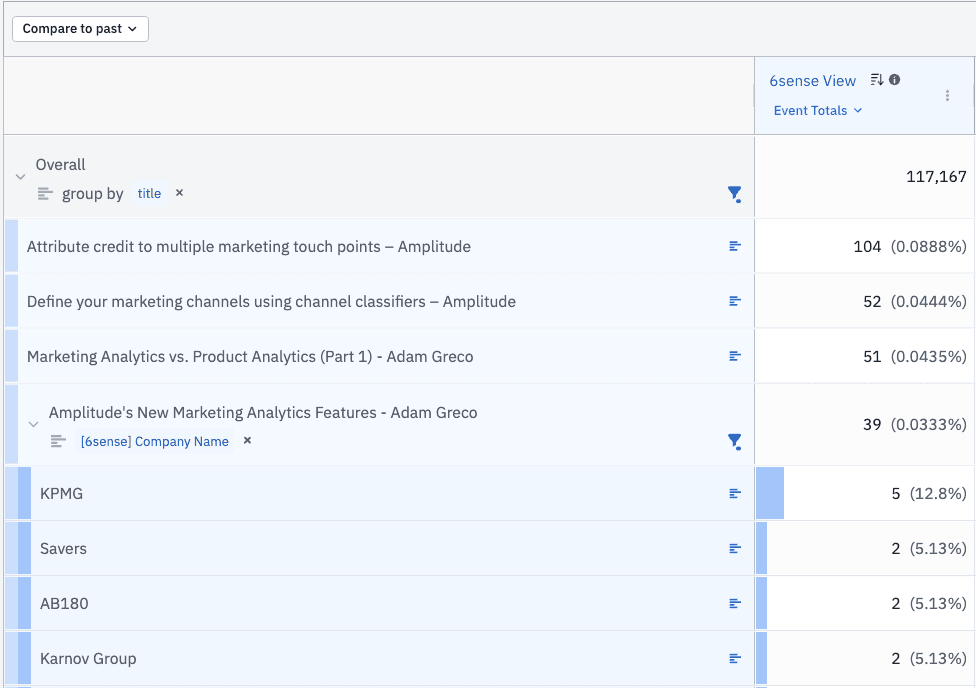
Here you can see the first few companies that might be interested in Amplitude’s new marketing analytics features. These companies can then be exported as needed:

Which Industries Are Viewing My Website?
If your B2B company wants to focus on specific industries, you can see which industries are visiting your website:

If you want to view a trend line for any specific industry, you can simply open that in a new chart directly from the data table:

Who Are the Big Fish?
Salespeople always want to go after the big accounts. So another way you can slice ABM data is by the company’s revenues. Here is a view grouped by the Revenue Range, filtered for companies that are in the billions:

Then you can break down each of these by the company name:
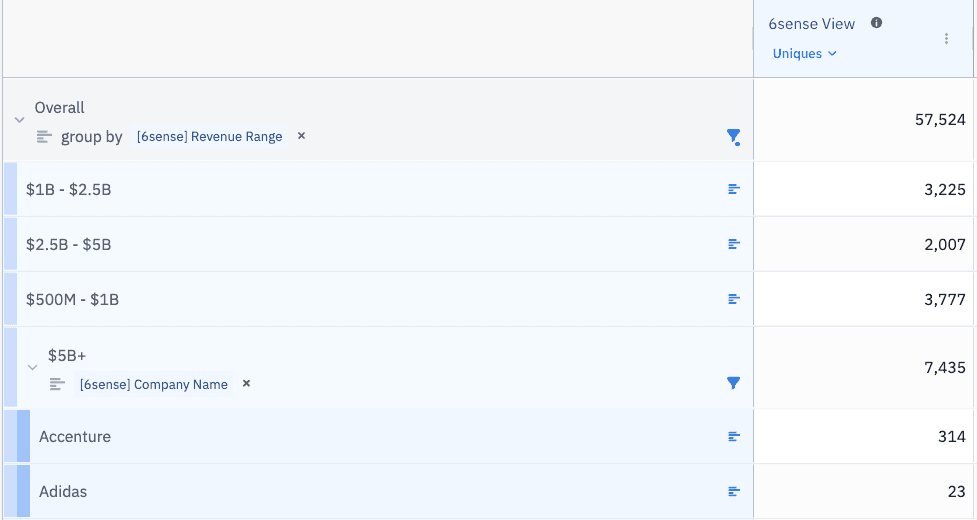
What Are My Competitors Viewing?
Another fun thing you can do with this ABM integration is view what your competitors check out on your site! You do this using the same approach to viewing target prospect companies, but replace them with your competitors:

In this case, our competitors are most interested in applying for a job at Amplitude or using our product free trial 😆!
Content Personalization
A more advanced ABM integration you can do involves content personalization. If you use an experimentation/personalization product (like Amplitude Experiment!), you can personalize the content that visitors see when they visit your digital properties. Since the ABM tool provides the visitor’s industry, you could show content or use cases relevant to their industry. For example, you might display QSR case studies to visitors from fast food organizations, and possibly even do company-level text personalization using the ABM company name:
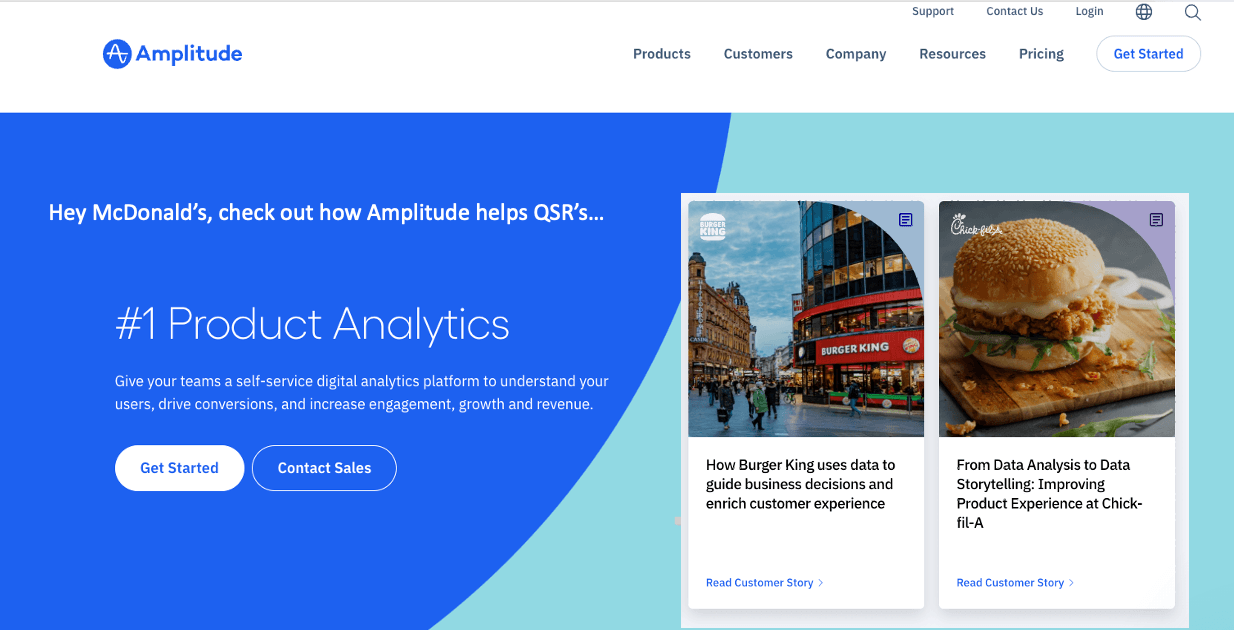
Both of these require proper sequencing to ensure the ABM data is available before content loads, and in some cases, it may only be possible to personalize after viewing the first page. But these are some creative ways to leverage ABM data to try and improve conversion rates.
ABM Integration Setup
Here is a high-level overview of the integration setup for those who want to “geek out” on this topic.
The first step in integrating an ABM tool and Amplitude is to work with your ABM vendor to push their data into the data layer. Let’s say that you are using Google Tag Manager. You would get this code from the vendor and send the data you need:
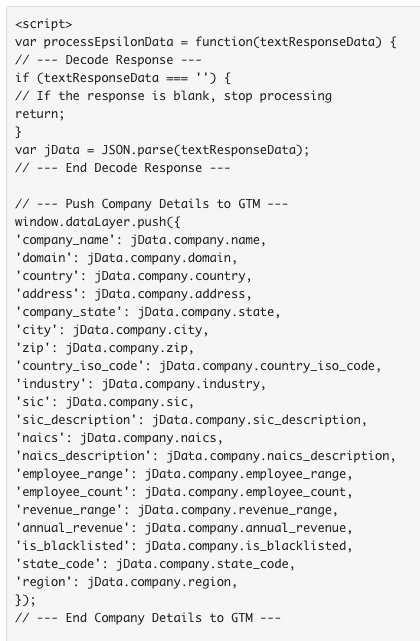
Once the data is in the data layer, you can configure the tag manager as needed and then modify your Amplitude tags to insert these data values into Amplitude properties:
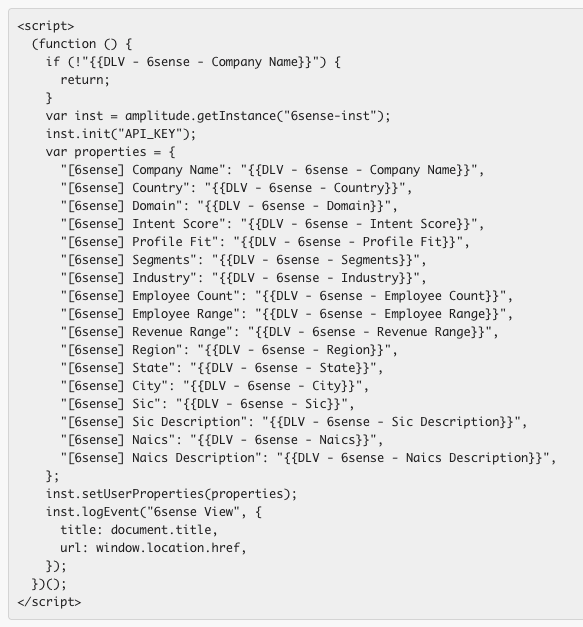
These will then appear as events and properties in Amplitude like this:

If your organization wants to limit how many events are sent to Amplitude (to manage your cost), you can configure the tag management system only to send events when the ABM product contains organizational data. You can also exclude your organization if desired. Both of these tactics have the added benefit of not requiring you to manually exclude the “None” and your organization values in reports.

Adam Greco
Former Product Evangelist, Amplitude
Adam Greco is one of the leading voices in the digital analytics industry. Over the past 20 years, Adam has advised hundreds of organizations on analytics best practices and has authored over 300 blogs and one book related to analytics. Adam is a frequent speaker at analytics conferences and has served on the board of the Digital Analytics Association.
More from Adam





